by Robert E. Hunter
The United Nation Security Council has agreed to a ceasefire in Syria, “a durable humanitarian pause for at least 30 consecutive days throughout [the country].” Like all such agreements, it contains a lot of “ifs” and “buts” and will depend on a degree of good will on most if not all sides that has been almost totally absent throughout this long and brutal conflict.
But what to make of the ceasefire resolution? And what to make with it?
Whenever there is a ceasefire in a conflict, especially one that involves parties with such radically different interests, bitterness on all sides, and spoilers who do not respond to any outside authority, what happens now will be critical. In human terms, there will be a chance for people who have suffered so much to gain some relief. In addition, however, all the local parties will use the time to improve their military capabilities for later use. Nothing was agreed in the UN resolution to deal with that matter, nor could there be.
The ceasefire intensifies the responsibilities of all who would like to bring this conflict to a halt to do much more than in the past to start a political process that might work. But how to do it?
Power and Credibility
Credibility is important, and so is power. The former should mean a convening role for the United Nations and Secretary General António Guterres. It is the only party that can come to the conflict with clean hands. All the parties engaged in the conflict, directly or indirectly, have played roles that rule them out in terms of eliciting trust and providing a framework for negotiations.
In terms of power, two countries matter most: the United States and Russia. Neither has fundamental stakes in the conflict, but both are military and political participants. More important, they are the two great powers with at least some leverage over directly engaged parties—though, arguably, no outsider has leverage over spoilers, especially the Islamic State, al-Qaeda, and other terrorist groups, which can easily wreck an extraordinarily fragile ceasefire.
Both Washington and Moscow will calculate how working together for the common goal of resolving the conflict will affect their broader relationship, as well as the position and importance that each would occupy in the Middle East if the Syrian civil war came to an end. This may be more difficult for the United States both because of its active opposition to Russian activities in Ukraine and elsewhere in Europe and because of the role that Russia is playing in regard to the legitimacy of Donald Trump’s 2016 election and efforts to use that issue to force him from office.
Four countries occupy the next circle of engagement: Israel, Saudi Arabia, Iran, and Turkey. Each has interests not just regarding what happens in Syria but also for their broader regional and even international ambitions. Israel fears a Syria that continues to provide a platform for countries and others (for example, Hezbollah) that threaten Israel, but it also wants to limit Iran’s role in Syria and the surrounding neighborhood. It wants to advance its nascent relationship with Saudi Arabia. And it wants to prevent the spotlight returning to the Israel-Palestine conflict that, for the present, has dropped out of sight.
Saudi Arabia has no inherent interest in Syria as such. But it does want to reverse the balance of forces in the Middle East, especially between Sunnis and Shias, that was upset when the 2003 US-led invasion of Iraq deposed a minority Sunni government ruling a majority Shia population and opened up opportunities for Iran. Riyadh’s primary goal in Syria is thus to see the minority Alawite (Shia) regime of Basher al-Assad in Syria deposed and replaced with a Sunni-majority government. It also wants to counter Iranian influence. To those ends, the Saudis are prepared, at least for now, to work with Israel, while playing down their lip service to the Palestinian cause.
Whether or not Iran is seeking to create a “Shia belt” extending across to Lebanon, it certainly wants to sustain sufficient influence to be taken seriously in all Middle East diplomacy while, closer to home, ensuring that Iraq will not again become an enemy Sunni state. It would like to create leverage to reduce external pressures, especially from Saudi Arabia and Israel, and particularly continued U.S. hostility fanned by Israel and the Sunni Arabs. Iran would also like to show Washington the price of its failure to implement all the sanctions-relief provisions of the Joint Comprehensive Plan of Action (JCPOA). Iran’s ties to and support for Hezbollah in Syria and especially Lebanon are useful although that organization predates ties to Iran and would continue to exist and confront Israel even absent the Iran factor.
Turkey’s interests are more parochial. In addition to President Recep Tayyip Erdogan’s longer-range ambitions to assert Turkey’s influence to its East, Ankara wants to keep Syria from being a haven for the Kurdish PKK and its military wing in Syria, the Popular Protection Units (YPG).
Two consequential parties cannot expect to be admitted directly to any formal negotiating process: the Al-Assad government and the various elements lumped together as the opposition. But they inevitably need to be involved, though indirectly and through formal participants with which they have close if not altogether trusting relations. (The Islamic State and its allies, with links to one or another Syrian faction, are ultimately on everyone’s hit list).
The U.S. Role
As usual in the Middle East, responsibility for taking the initiative inevitably falls to the outside country most directly involved in all parts of the region and looked to for leadership, whether welcomed or opposed, by all and sundry: the United States. This role, should Washington be willing to assume it, will not be easy. With each of the other major parties, Washington would have to take positions at variance with current US policies and practices. That will mean an end to helping Saudi Arabia and other Sunni Arab states “right the regional balance” against the Shias that the US upset in 2003. It will mean disentangling the US from Israel’s perspectives, except to the degree that the latter’s security is genuinely at risk (in Washington’s estimation) and where the two countries’ needs do not conflict. It will mean trying to rebuild productive relations with Turkey, in trouble since the Iraq war and exacerbated by America’s trying to square the circle of defeating the Islamic State with the help of Kurdish YPG fighters.
Most difficult for the United States will be working with both Iran and Russia. Washington’s interests in doing so are clear, but in both cases domestic political factors work against the United States taking rational and self-interested positions. Israel and Saudi Arabia resolutely oppose any US opening to Iran, for reasons that have nothing to do with American needs, even if Teheran itself were willing. President Trump’s three generals in key foreign policy positions have all had bad experiences with Iranian military involvement in Iraq, but they will have to set those feelings aside in recognition of broader US objectives. So far, none of them has been willing to do that. The same applies to Secretary of State Rex Tillerson, whose prior regional experience was all with Arab oil producers.
Regarding Russia, Trump’s instincts about the need for the United States to try creating some basis for relations, despite what Russian President Vladimir Putin has done in Ukraine and elsewhere, are stymied by the role that Russia played in the US 2016 elections and the value that the Russia issue has for Trump’s opponents trying to drive him from power. Maybe that outcome will prove justified. But it would still exact a price in US foreign policy and security interests.
A further difficulty for the United States has been President Barrack Obama’s 2011 declaration that “Assad must go.” Achieving this goal obviously would suit the Sunni Arabs’ interests, though whether Israel would really welcome it is unclear, given the modus vivendi that Israel and the Assad family worked out decades ago. Certainly, so long as a peace proposal fails to offer protection for all confessional and ethnic groups in Syria, none of the contending elements will be prepared to compromise. “Assad must go,” in fact, primarily serves as a rallying cry for the Alawites to fight to the bitter end, so long as there are no guarantees for their future.
The United States might still be able to launch a process with some chance of success. But it will first have to disenthrall itself from some prior positions. It will have to separate itself from the interests of any regional parties that do not comport with America’s own. It will need to accept that, in part because of US failings under the Obama administration, Russia will be in the region to stay, even if Moscow and Washington can learn to live with one another there. Washington will need to resuscitate the old standard “politics must stop at the water’s edge.” At the same time, the Trump administration needs to find the capacities for analysis, planning, and diplomacy that have been in short supply during the last three administrations in the Middle East and continue to be so—whether at State, the Pentagon, or the White House.
In addition, it is impossible to separate Syria from other struggles in the region. Syria-focused diplomacy will have to be coupled, in particular, with efforts to stabilize the Persian Gulf region, especially relations between Saudi Arabia and Iran. But currently the prospects for progress are dim given that other regional parties, notably Israel, are exacerbating regional tensions and the US is pursuing policies that are not in its fundamental, long-term interests.
Further, the Trump administration reportedly plans individual Washington meetings this spring with leaders of Saudi Arabia, Qatar, and the United Arab Emirates, possibly followed by a summit in the US with the Gulf Cooperation Council. A key US-Saudi goal is to build a solid front against Iran. But that will reduce any interest Teheran has in seeing Syria stabilized. US diplomacy may thus prove to be in conflict with itself.
All this is made more difficult by America’s quixotic president, who would need to rise above himself if the United States is not, during the brief time slated for the Syrian ceasefire, to fail once again and further tarnish the once-bright American reputation for competence in the Middle East that has been losing its luster since the 2003 invasion of Iraq.
Photo: António Guterres (Wikimedia Commons).

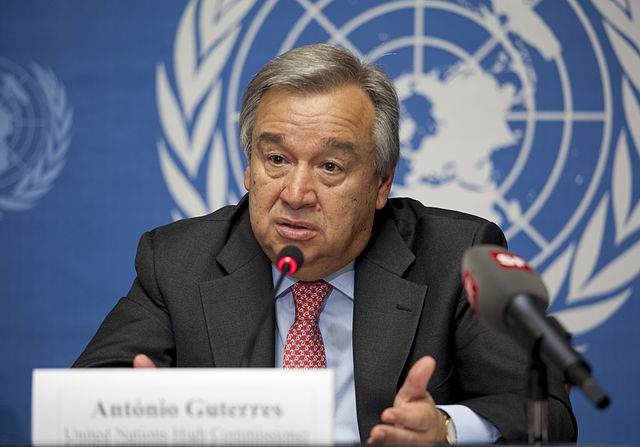
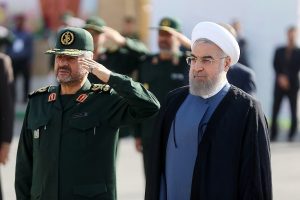
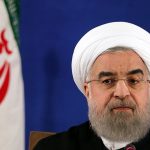
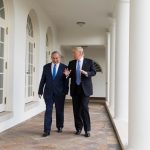
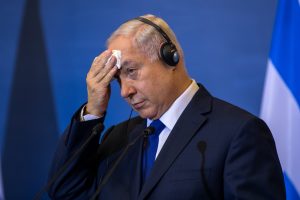
It’s not really a ceasefire — “the cessation of hostilities would not apply to military operations against Islamic State in Iraq and the Levant (ISIL/Da’esh), Al-Qaida, Al-Nusra Front and all other individuals, groups” — and the US is not really a factor except for being in Syria illegally to continue its regime change agenda. Russia, Turkey and Iran, with Syria, are part of the solution and the US isn’t, thank heavens.